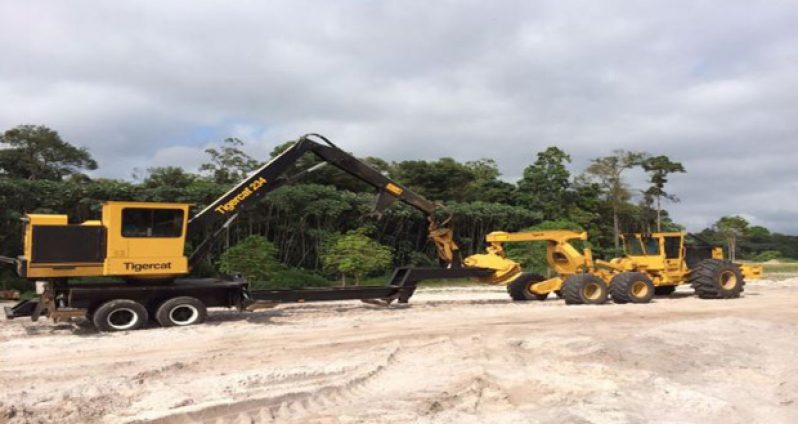THE Iwokrama rainforest conservation project has begun harvesting trees in the second phase of a project designed to keep its operations afloat, and at the same time demonstrate sustainable use of the forest.The centre will employ a 60-year cutting cycle, harvesting a maximum of 1,800 hectares per year (which is less than 0.5% of the Iwokrama Forest) under a very selective harvesting regime, which will result in only a few stems per hectare being removed and no large gaps created in the forest canopy, the Iwokrama Centre in Georgetown has said in a statement.
The Iwokrama forest, measuring some 371,000 hectares of rainforest, is located at the centre of Guyana, and brings together 16 local communities of approximately 7,000 people who are all shareholders and participants in the sustainable timber, tourism and research operations through co-management of the forest and benefit-sharing arrangements.
The operations will employ best practices in forestry, including a strict no-log export policy and the employment of Reduced Impact Logging (RIL) and Directional Felling (DF) techniques, Iwokrama stated.
The Iwokrama Centre said its model has attracted a high level of interest from the international private sector with the President of Woodmizer and the area sales manager from Stihl already having visited the field operations and committed their continued support for the initiative.
“International buyers have also begun to show keen interest in the wood products,” the Iwokrama Centre stated.
MODEL FORESTRY OPERATION
The project is being undertaken in partnership with Farfan and Mendes Limited, which will be testing new equipment, namely, a Tigercat 635D skidder and a model 234 Knuckleboom log loader.
“This brand is new to Guyana, and the technology should allow for the faster and more efficient harvesting operations and a reduced environmental footprint,” Iwokrama stated.
One key area that will be addressed during this phase of the model forestry operation is that it is much more efficient to employ a “cutting for value”(which allows for the highest recovery of high-grade lumber from the log and therefore the greatest value) strategy rather than the industry standard of a “cutting to order” that precludes getting the highest volume and grade recovery.
The Iwokrama Centre said all of its business models are designed to follow international economic, social and environmental best practices and employ innovative governance systems involving various stakeholders.
The centre will use the results of the research and experience it acquired in Phase One of its operations in areas such as forest dynamics, pre-harvest and post-harvest inventories, community engagement, certification, facilities layout and logistics to help refine and improve operations and forest management in Phase Two, the statement added.
As with its other businesses, the centre said it will replicate its overarching management and sustainability protocols in the timber operations by informing forestry policy through providing practical results to policy holders and building local, regional and international capacity in areas of sustainable forest management.
As it develops the model, the centre said it intends to continue to work closely with its community partners, the North Rupununi District Development Board (NRDDB) which represents the 16 villages of the North Rupununi.
Later this month, the centre will host representatives from these 16 communities to visit the forestry operations and hold discussions with the centre and its private-sector partners.
During this period, the centre also plans to renew its Collaborative Management Agreement (CMA) and the Memorandum of Understanding (MOU) with the NRDDB with regard to co-management of the Iwokrama Forest.



.jpg)








